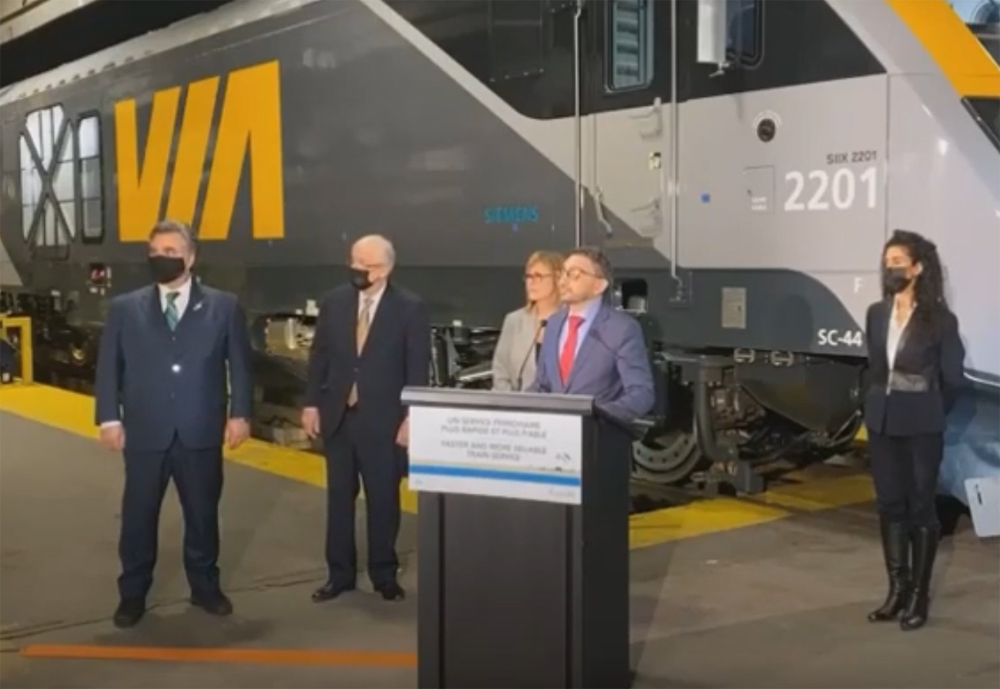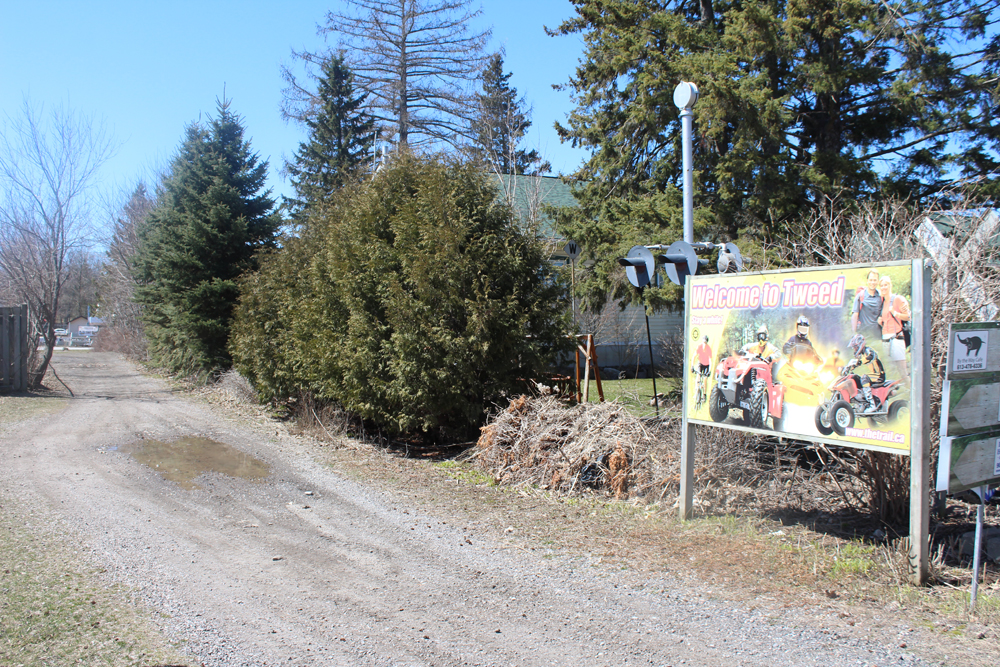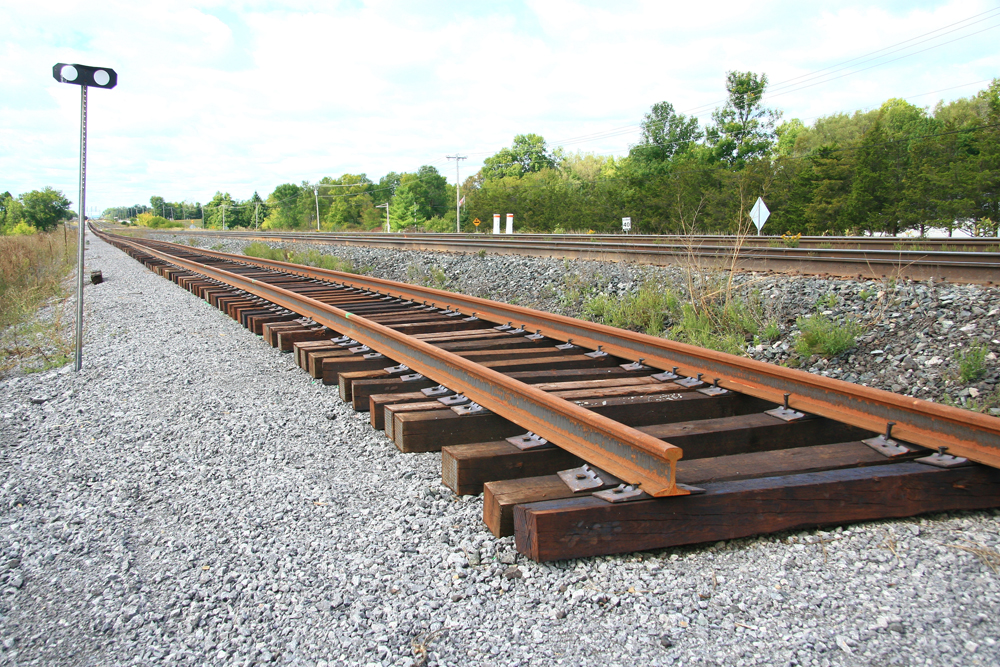
MONTREAL — The Canadian government will seek “world-class knowledge and private sector expertise” for VIA Rail Canada’s proposal to build passenger-only trackage for parts of its Quebec City-Toronto corridor rather than directly financing the project, Transport Minister Omar Alghabra announced Wednesday.
Proposal dates to 2015

First unveiled by then-VIA CEO Yves Desjardins-Siciliano in 2015, the project would build 110 mph-capable track over what had been a low-speed Canadian Pacific secondary line between Ottawa and Toronto, rather than invest in capacity upgrades to VIA’s existing Montreal-Toronto route owned and dispatched by Canadian National. Much of the suggested new path through rural areas is now a trail, with rails having been abandoned decades ago. Subsequent iterations of the plan also included a Montreal-Trois Rivieres-Quebec City ex-CP line on the north shore of the St. Lawrence River.

Government-funded station and track improvements were made to VIA’s existing route, serving population centers such as Brockville and Kingston, Ont., beginning in 2012, utilizing economic stimulus grants to CN. But despite unclogging potential bottlenecks with new interlockings and miles of additional main tracks, CN hasn’t improved passenger-train punctuality or allowed as many additional round trips as VIA sought.
Unlike U.S. statutes that prescribe passenger train preference and on-time performance metrics, Canada insists on “arms-length” negotiations between VIA and host railroads. This effectively means VIA trains are routinely delayed in favor of freight operations and the passenger carrier has no legal recourse.
Studies, not action
In June 2019, then-Transport Minister Marc Garneau announced the government would spend C$71 million ($55 million in U.S. dollars) “to further explore VIA Rail Canada’s proposal for High Frequency Rail.” He said the money would finance “finalizing legal and regulatory work, consulting with stakeholders and Indigenous communities, examining required land and track acquisitions, and completing the technical, financial, and commercial analysis required for a final investment decision.”
Then-VIA President and CEO Cynthia Garneau (no relation) joined him for that announcement. However, she was not quoted in any of press materials provided by Transport Canada to the media, even though the event was held in front of a new Siemens trainset at VIA’s Pointe St. Charles maintenance facility.
The latest announcement effectively means that after almost three years of study, the agency concluded that the project could move forward only after it launched a “Request for Expressions of Interest” seeking advice and views from industry on the High Frequency Rail project” through the government’s procurement website.
A virtual information session is to be conducted next month, and the deadline for “expressions of interest” will be sometime in May. Requests for qualifications and proposals will continue through the fall of 2024 before any decisions are made. A project website has been established here, but it currently has little content.
Project faces challenges
Transport Canada’s move to push back a decision more than two additional years essentially means the government is unwilling to unilaterally fund VIA’s vision for a route that may be electrified but is not “high speed.” The price tag has been estimated as high as C$12 billion.
Price is not the only obstacle. Others include:
— A direct Mount Royal Tunnel entry to Montreal’s Central Station from Quebec is not possible because it is not considered feasible, given the REM light rail system now being built through the tunnel that also brought an end to commuter service on that route [see “Montreal plans free transit …,” Trains News Wire, Sept. 10, 2019]. Alghabra confirmed a separate route into the station from the east will be required, adding expense and potential engineering delays.
— Canadian National’s narrow corridor west of Central Station to VIA’s existing route at Coteau, Quebec, will still need separate tracks for VIA trains. Little space exists for that purpose.
— Relaying track on a line CP abandoned decades ago may not achieve desired time savings and trigger opposition in many rural communities.
— Unifor, the Canadian transportation workers union, has backed increased investment in passenger rail but is actively opposing what it calls “the privatization of VIA Rail” in a statement issued Wednesday.
Ultimately the Canadian government has affirmed its laissez-faire policy toward the VIA-CN relationship rather than pressing the host railroad to cooperate in creating a more robust passenger rail network. If Transport Canada doesn’t get any “expressions of interest” from this latest initiative — a distinct possibility — then more than 10 years will have been wasted on promises of what the agency breathlessly claims will be “the largest transportation infrastructure project that Canada has seen in decades.”
—Updated at 10:20 a.m. to correct cost of project to “C$12 billion.”














Try reinstating service to the other Provinces get the Canadian back to its original schedule or even try running it daily with a reduced consist for your citizens who might actually use it if it was available.
VIA can’t run a train to save its soul but it can come up with a flashy proposal for something new in the future.
The French do it… Japanese do it… Chinese… Germans… Italians… Turks… Spanish… Moroccans… Koreans… Swedes… Swiss… even the Brits and Floridians can do it… just do it… just build it! Build a modern intercity passenger rail system… like the rest of the modern world.
“…like the rest of the modern world.”
Excluding the USA, of course….
He mentioned Florida, so not really.